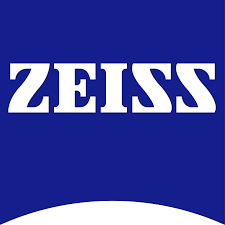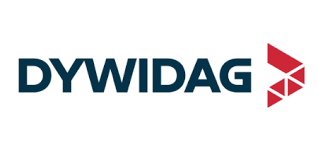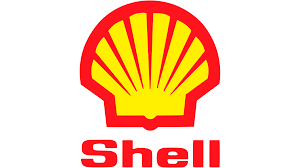Space Exploration
Published Date: March 16, 2024 | Report Code: space-exploration
Space Exploration Market Size, Share, Industry Trends and Forecast to 2033
This report delves into the rapidly expanding field of space exploration, providing comprehensive insights into market dynamics, forecasts from 2023 to 2033, and key technological advancements shaping this sector.
| Metric | Value |
|---|---|
| Study Period | 2023 - 2033 |
| 2023 Market Size | $110.00 Billion |
| CAGR (2023-2033) | 8.7% |
| 2033 Market Size | $260.34 Billion |
| Top Companies | NASA, SpaceX, Blue Origin, Boeing |
| Last Modified Date | 02 June 2025 |
Space Exploration (2023 - 2033)
Space Exploration Market Overview
Customize Space Exploration market research report
- ✔ Get in-depth analysis of Space Exploration market size, growth, and forecasts.
- ✔ Understand Space Exploration's regional dynamics and industry-specific trends.
- ✔ Identify potential applications, end-user demand, and growth segments in Space Exploration
What is the Market Size & CAGR of Space Exploration market in 2023?
Space Exploration Industry Analysis
Space Exploration Market Segmentation and Scope
Tell us your focus area and get a customized research report.
Space Exploration Market Analysis Report by Region
Europe Space Exploration:
Europe's market is expected to grow significantly from $33.40 billion in 2023 to $79.04 billion by 2033, supported by the European Space Agency's various programs and commercial partnerships focusing on satellite systems and interplanetary missions.Asia Pacific Space Exploration:
In the Asia Pacific region, the space exploration market is anticipated to grow from approximately $23.50 billion in 2023 to $55.61 billion in 2033. Countries like China and India are intensifying their space programs, focusing on Mars missions, lunar exploration, and developing indigenous launch capabilities, significantly enhancing the region's position in the global market.North America Space Exploration:
North America, being the largest segment, is projected to expand from $35.90 billion in 2023 to $84.97 billion in 2033. The U.S. is a leader in space exploration, with NASA driving government expenditure and commercial players like SpaceX pioneering reusable launch technology, which contributes substantially to market growth.South America Space Exploration:
The South American space exploration market is small but growing, transitioning from $6.03 billion in 2023 to $14.27 billion by 2033. Brazil’s space agency has been actively pursuing collaborative projects aimed at improving satellite technology and exploration capabilities, highlighting a gradual but essential investment in space.Middle East & Africa Space Exploration:
The space exploration market in the Middle East and Africa is projected to increase from $11.18 billion in 2023 to $26.45 billion in 2033. Countries in this region are increasingly investing in space technology, with initiatives like the UAE’s Mars mission enhancing the global standing of new players in space exploration.Tell us your focus area and get a customized research report.
Space Exploration Market Analysis By Technology
Global Space Exploration Market, By Technology Market Analysis (2024 - 2033)
The technology segment of the space exploration market encompasses multiple technologies, such as launch vehicles, spacecraft, ground systems, and various support technologies. Launch vehicles contribute significantly, demonstrating robust growth from $74.98 billion in 2023 to $177.45 billion in 2033, reflecting the increasing frequency of missions. Spacecraft and ground systems will also see substantial growth, with spacecraft projected to rise from $24.52 billion to $58.03 billion, highlighting investments in advanced satellites and robotic systems.
Space Exploration Market Analysis By Application
Global Space Exploration Market, By Application Market Analysis (2024 - 2033)
This segmentation focuses on applications such as communication, Earth observation, scientific research, defense and security, and crewed versus uncrewed missions. Notably, communication applications are expected to dominate, expected to rise from $61.45 billion in 2023 to $145.42 billion in 2033, driven by demand for better satellite communication technology. Earth observation and scientific research applications are also crucial, showing increasing significance amid rising global awareness of climate change and international security.
Space Exploration Market Analysis By End User
Global Space Exploration Market, By End-User Market Analysis (2024 - 2033)
End-users in the space exploration market include government agencies, commercial companies, and research institutions. Government agencies will continue to hold a significant share, estimated at $74.98 billion in 2023, reflecting robust state-backed programs and initiatives. The commercial sector, growing from $24.52 billion to $58.03 billion, indicates strong private sector involvement in the realm of space, particularly in satellite launches and development for space tourism.
Space Exploration Market Analysis By Mission Type
Global Space Exploration Market, By Mission Type Market Analysis (2024 - 2033)
Mission types are broadly categorized into crewed and uncrewed missions. Crewed missions are projected to see significant growth, from $94.72 billion in 2023 to $224.18 billion in 2033, driven by plans for manned missions to Mars and the establishment of lunar bases. Uncrewed missions are also expected to double from $15.28 billion to $36.16 billion, reflecting increased reliance on robotic missions for exploration and data collection.
Space Exploration Market Trends and Future Forecast
Tell us your focus area and get a customized research report.
Global Market Leaders and Top Companies in Space Exploration Industry
NASA:
The National Aeronautics and Space Administration (NASA) is a pioneer in the space exploration sector, leading numerous missions, including the Artemis program aimed at lunar exploration.SpaceX:
SpaceX, founded by Elon Musk, revolutionized the space sector with its reusable rocket technology, significantly lowering launch costs and facilitating space travel and satellite deployment.Blue Origin:
Founded by Jeff Bezos, Blue Origin focuses on developing technologies to enable private human access to space and is known for its New Shepard suborbital rocket.Boeing :
Boeing plays a significant role in the aerospace industry, providing advanced spacecraft and technology solutions for various missions, including its CST-100 Starliner.We're grateful to work with incredible clients.









Related Industries
FAQs
What is the market size of space exploration?
The global space exploration market is projected to reach approximately $110 billion by 2033, growing at a CAGR of 8.7% from its current value. This growth reflects increasing investments in technologies and missions focused on space exploration.
What are the key market players or companies in this space exploration industry?
Key players in the space exploration industry include NASA, SpaceX, Boeing, and ESA, among others. These organizations are pivotal in driving research, developing launch capabilities, and expanding the commercial space landscape.
What are the primary factors driving the growth in the space exploration industry?
Factors driving growth in space exploration include technological advances, increased government funding, collaboration between public and private sectors, and growing global interest in space research and commercial opportunities.
Which region is the fastest Growing in the space exploration market?
The fastest-growing region in the space exploration market is Asia Pacific, expected to grow from $23.50 billion in 2023 to $55.61 billion by 2033. This expansion is driven by investment in space technology and satellite launches.
Does ConsainInsights provide customized market report data for the space exploration industry?
Yes, ConsainInsights offers customized market report data tailored to specific client needs in the space exploration industry, facilitating an informed decision-making process based on up-to-date and relevant market insights.
What deliverables can I expect from this space exploration market research project?
From the space exploration market research project, you can expect comprehensive reports, market analysis, growth forecasts, segmentation data, and insights into emerging trends, providing a robust foundation for strategic initiatives.
What are the market trends of space exploration?
Current market trends in space exploration include increased privatization of space missions, advances in reusable rocket technology, a focus on sustainable practices, and rising interest in extraterrestrial research and potential colonization missions.
